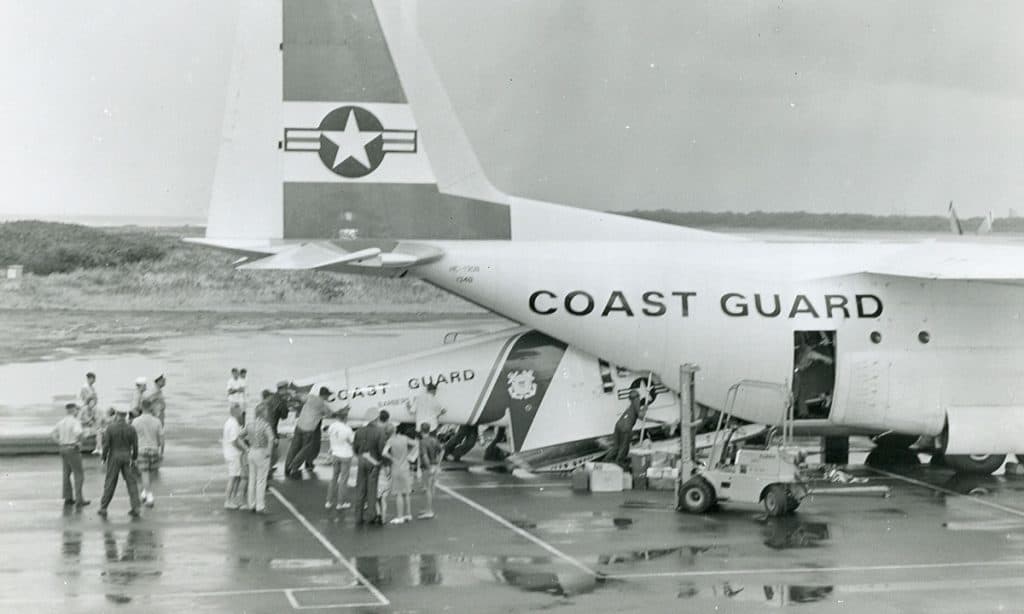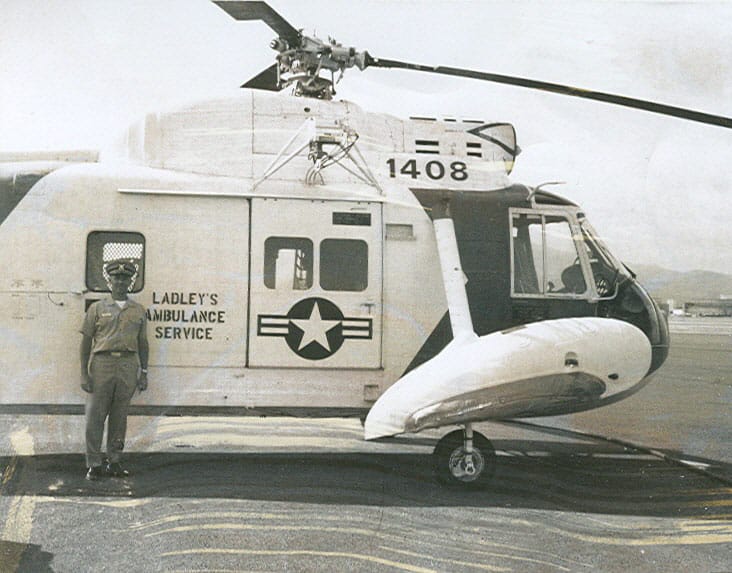A Helo Tale
By CAPT Art Ladley, CGAV #724
The first helicopters ever assigned to CGAS Barbers Pt., two HH-52As, arrived there in the fall of 1968. Each was delivered by C-130. As they exited it almost appeared that the C-130 was giving birth to an HH-52A.

Shortly after the two new helos were assembled, two standardization instructors, LCDR Paul Lamb and LCDR Bert Potter, arrived from Mobile to begin transitioning our pilots to the new machine. At that time, LCDR Dick Burns, my assistant OPS officer, was the only pilot aboard with significant HH-52A experience. He did a fine job in helping the Mobile pilots set up our training needs. In short order we had a cadre of trained aircraft commanders and copilots and were ready for any operations. The training phase conducted by the Mobile pilots was quite rigorous and included lots of autorotations and stabilization off maneuvers. We practiced autorotations to the land and the water and some were done under the hood. As I recall, Frank Shelley, the Coast Guard’s test pilot at that time had developed these unique autorotation procedures

All of us were eager to see the HH-52A in action on a real SAR mission but the 14th District OPS Office in Honolulu seemed a little shy in using our new capability. However, the Navy at Barbers Pt. began to call on us with some regularity to medevac some of their crewman needing immediate care to Tripler Hospital. This was great practice for our pilots and gave them a sense of accomplishment. Nonetheless, there were some people who thought that the Navy was taking advantage of us when an ambulance would have been just as effective. One morning I came to work and suddenly noticed that the H-52s had new signs on their sides – Ladley’s Ambulance Service. Bill Kozlovsky, our engineering officer at the time, surely had a hand in this escapade. Everyone including our CO, CAPT Harry Potter, thought it was great. While certainly being non-regulation, the signs remained on for a week or so and just as suddenly disappeared. And in short order our helos were finally getting some steady use for SAR, ATON and logistics.

